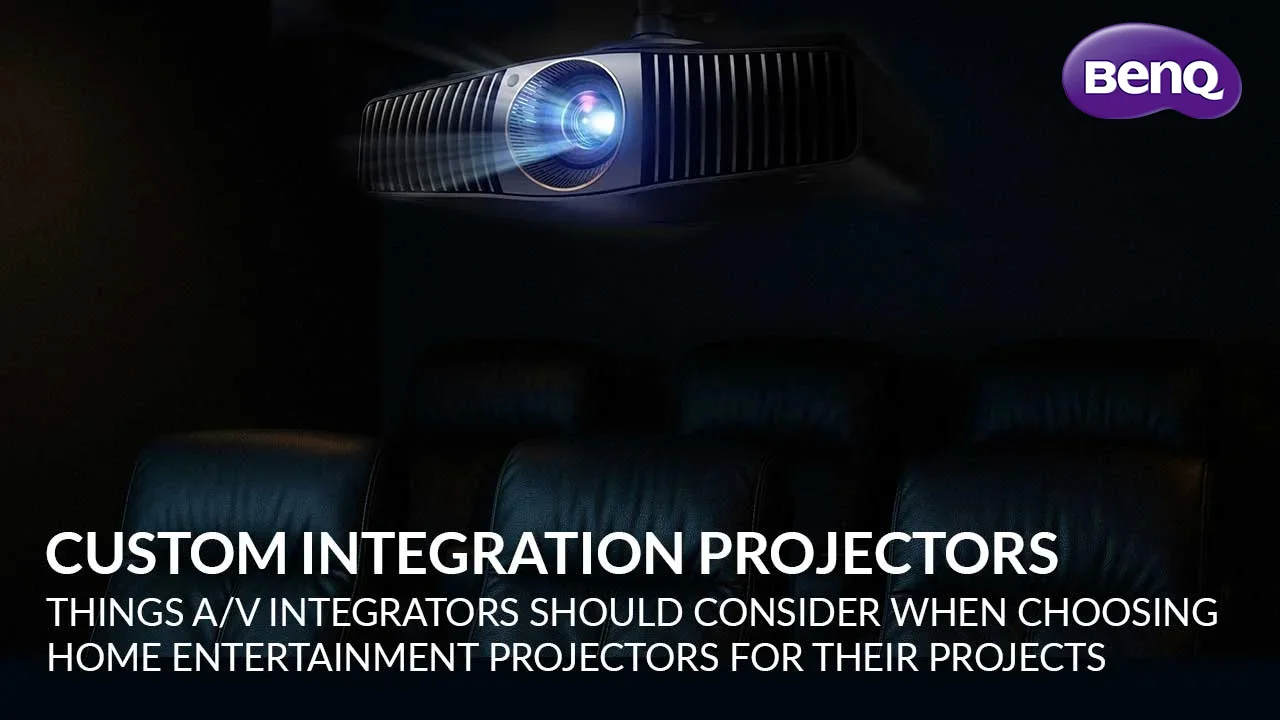
When selecting the right projector for a custom integration application, several factors need to be considered, not just resolution and brightness. Several features separate a good custom integration-focused projector from a standard home entertainment projector, and they are often overlooked on a spec sheet. While picture quality is essential, ease-of-use and placement flexibility matter just as much to many clients.
This article, sponsored by BenQ, explores the key priorities integrators should consider when specifying a projector for high-end home environments. It focuses on integration convenience, installation flexibility, and long-term reliability.
A custom integration-focused projector should not only provide an immersive image, accurate color, and deep black levels but also be easy to install, seamlessly integrate into a smart home control system, and perform reliably over time with minimal maintenance. AV professionals must evaluate projectors through a broader lens—one that balances performance with practicality. We’ll examine how the BenQ W5800 is an excellent solution for professionals who demand excellence not only on screen but also behind the scenes.
Let’s explore things every Pro-AV installer and cinema integrator should consider when choosing a projector for a dedicated home theater and media room.
Picture Quality
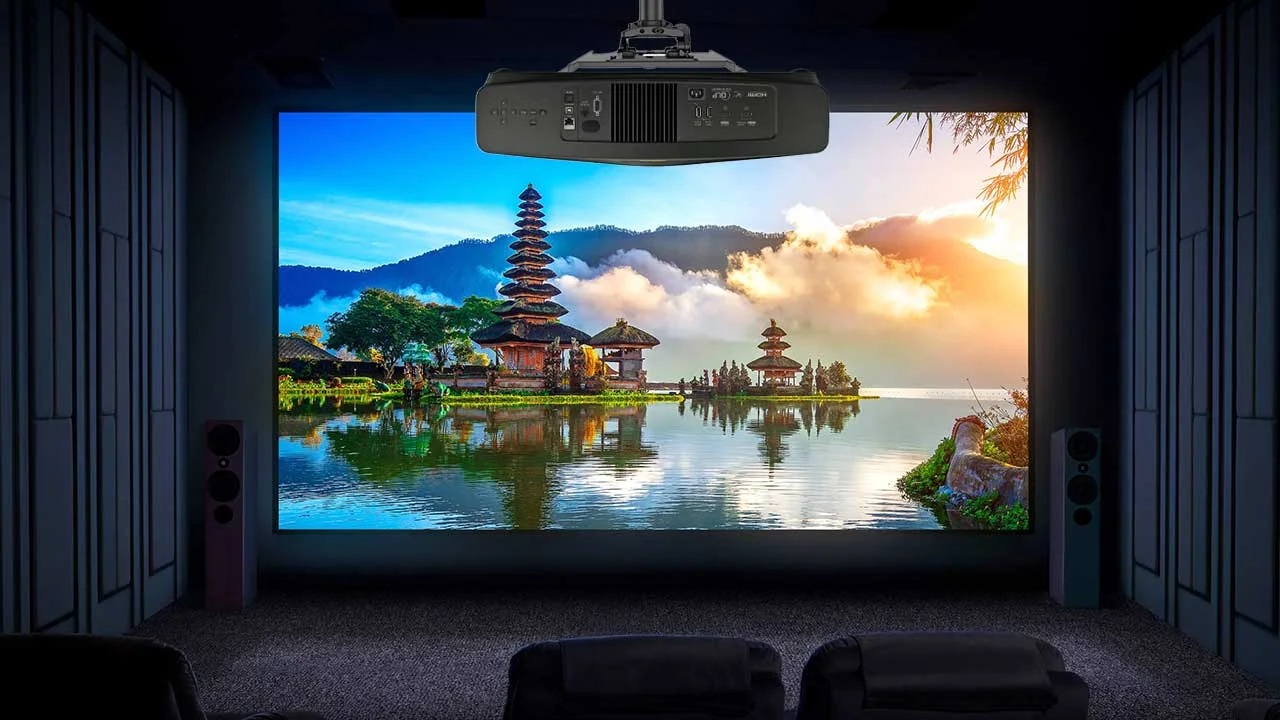
First and foremost, image fidelity is paramount. Discerning clients expect immersive cinematic visuals, which means the projector must offer 4K onscreen resolution, accurate colors, and deep black levels with excellent shadow detail. We covered this topic in a previous article, “Why Should You Utilize a Color Accurate Projector in Custom Integration Projects?"
Purchasing and installing a projector like the BenQ W5800, which has been factory-calibrated to deliver accurate out-of-the-box color performance, is great for home theater enthusiasts who want accurate image quality. This helps AV integrators deliver a premium visual experience without spending hours adjusting the projector, streamlining the installation process.
For those who want to adjust the W5800 image quality for a specific room/environment, the W5800 includes ISFccc-certified calibration adjustments so that you can fine-tune the projector’s color temperature, brightness, and contrast settings.
Installation Flexibility
While a premium projector should deliver great picture quality, installation flexibility is just as important. Installation flexibility starts with the lens assembly. The custom integration-focused projector’s lens should include a good amount of zoom, along with vertical and horizontal lens shift. The BenQ W5800's motorized 1.6x zoom lens has a throw ratio of 1.50:1 - 2.41:1 (f/2.1-3.0), so it can project a large image even in mid-sized or shallow rooms.
The W5800 offers lens shift (vertical +/-50% and horizontal +/-21%), which makes it easy to perfectly align the image with the screen, even when the projector can’t be placed directly in front of it. This is particularly useful in rooms where ceiling joists, ventilation, or architectural design prevent straightforward mounting.
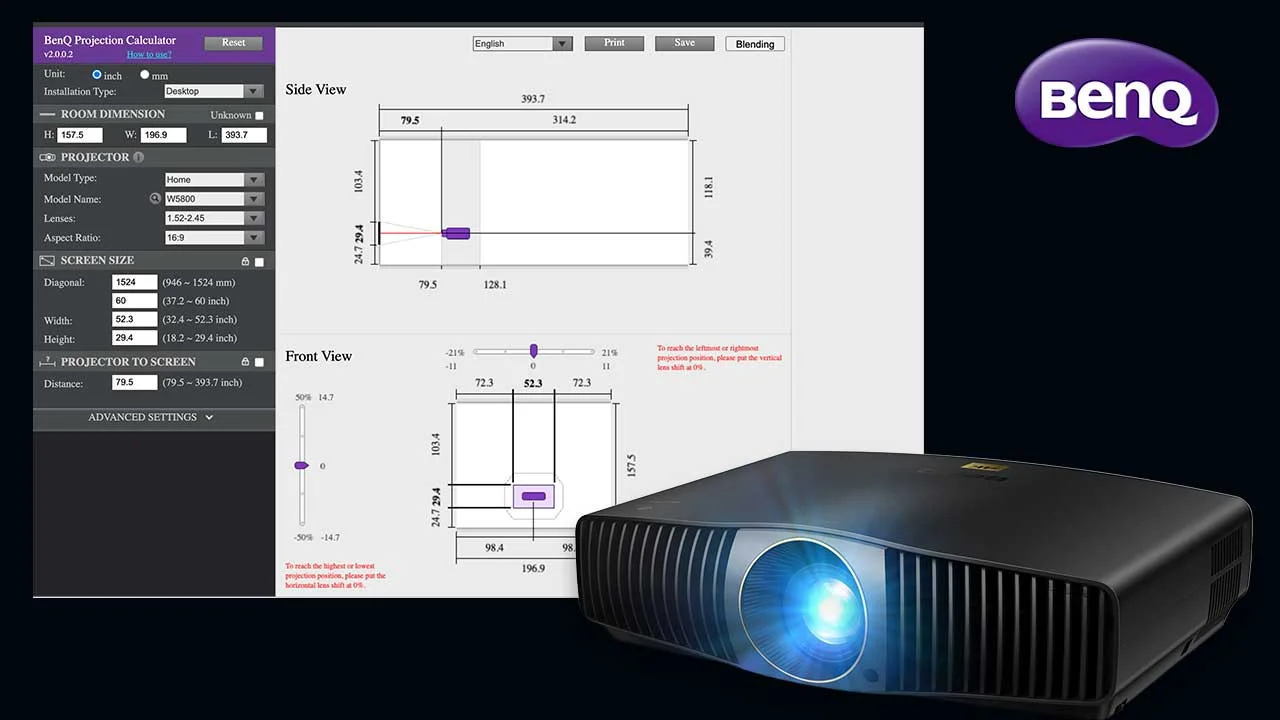
Horizontal and vertical lens shift allows you to move the projected image up, down, left, or right without physically moving the projector or distorting the image. This is achieved through optical adjustment, which preserves the full resolution and maintains perfect geometry.
In contrast, digital keystone correction manipulates the image electronically to correct for distortion caused by an off-center or tilted projector. While keystone correction can be helpful in a pinch, it reduces image quality by scaling and compressing the image, often introducing artifacts and decreasing sharpness. For this reason, lens shift is the preferred method for image alignment in home theater installations, as it ensures optimal image fidelity and preserves the projector’s native resolution.
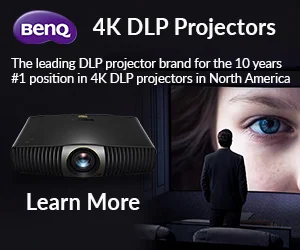
A broader zoom range and horizontal and vertical lens shift make installation much easier when replacing an older projector. Eliminating the need to relocate the projector mount can take hours off an installation project. Another benefit of a projector with installation flexibility is that you can easily utilize the same projector model in multiple jobs. To make it easy to determine the throw range for a variety of screen sizes, BenQ offers free online Projector Throw Calculator.
Movie enthusiasts often want to utilize CinemaScope screens. Projectors like the W5800 support different aspect ratios, such as 16:9 for television content and 2.35:1 for widescreen films. This allows seamless transitions between content types with the touch of a button, eliminating the need for constant manual adjustments or expensive anamorphic lens attachments.
Motorized lenses with a wide zoom range and lens shift are critical features because they simplify installation and maximize flexibility without sacrificing picture quality. In rooms where aesthetics matter as much as performance, flexibility is not a luxury; it’s a necessity.
Home Automation
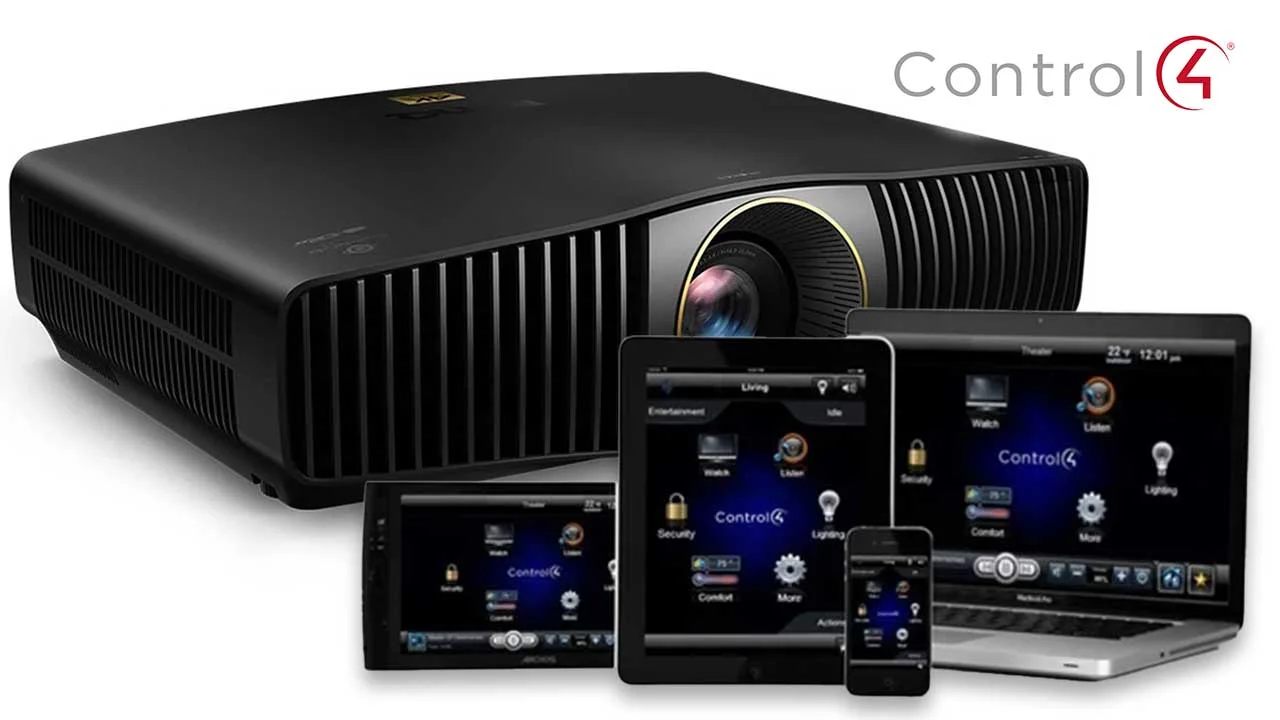
The BenQ W5800 is compatible with multiple Home Automation Systems including Control 4
It does not matter how good the home theater system performs if it is difficult for the owner to use. For AV integrators, selecting a projector that plays well with other systems is just as important as ensuring it delivers a sharp, vibrant image. Many high-end customers care about the experience, not the technology, so the easier it is for their entire family to operate it, the more satisfied they will be. They are willing to pay more to easily access their favorite movies, video games, or TV shows on their projector with just a touch of a single button.
In a modern home theater or media room, projectors are no longer standalone devices; they are expected to operate as part of a larger, interconnected ecosystem. A projector is usually part of a more elaborate system that includes multiple sources, a motorized screen, and an audio system. Most users would prefer to control everything via one remote control.
Most premium residential installations rely on home automation. The BenQ W5800 supports the most popular automation platforms, such as Control4, Crestron, or Savant. It also includes a suite of connectivity options designed for professional integration. These include RS-232 for direct serial control, a LAN port for IP-based commands, and dual 12V triggers for seamless automation with other devices such as screens and lifts.
These features ensure the W5800 integrates smoothly into even the most complex systems without requiring workarounds or external control processors. Choosing a projector designed for custom integration streamlines the setup process and creates a more cohesive and reliable experience for their clients.

Long-Term Reliability
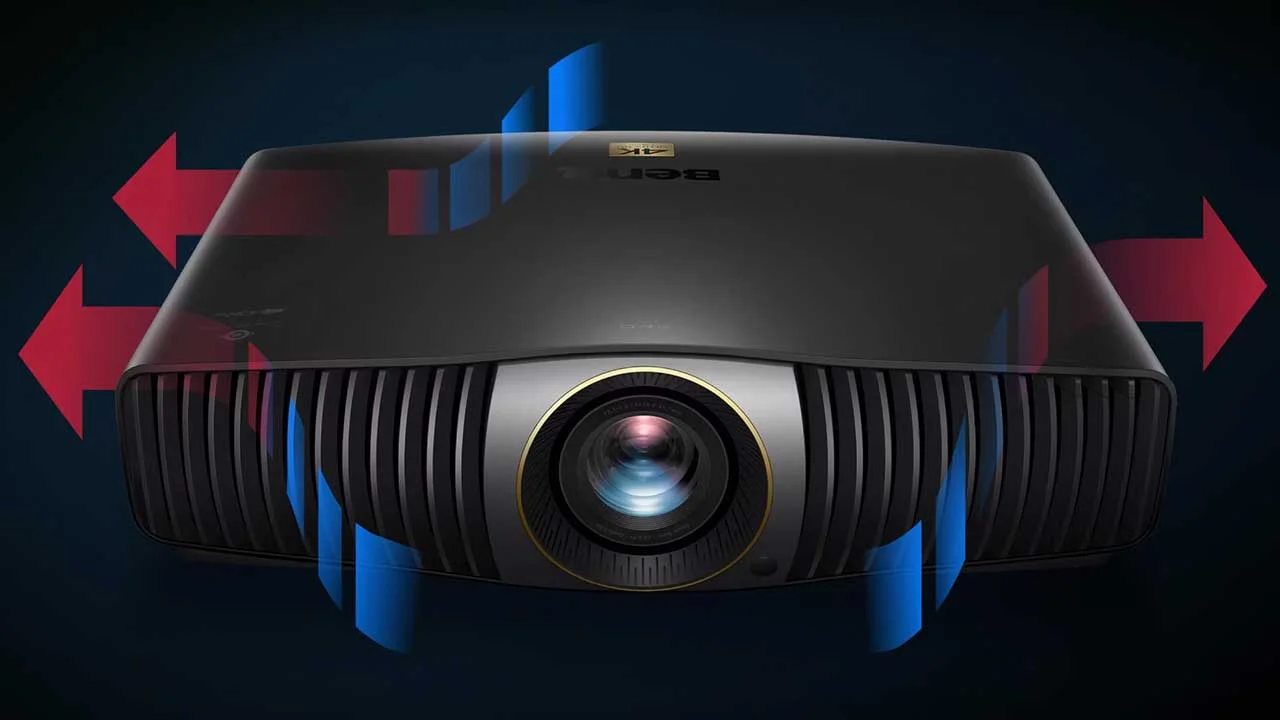
Laser light source combined with a multi-channel cooling system ensures years of whisper quiet operation
For AV integrators, long-term reliability is not just a product spec—it’s a business imperative. A projector that performs beautifully during installation but falters six months later can result in costly service calls, frustrated clients, and even reputational damage. That’s why durability, light source longevity, and consistent image quality over time are crucial considerations when specifying projectors for premium home installations.
Traditional lamps can degrade quickly under such usage, leading to dimming, color shifts, and eventual replacements, interrupting the user experience. The BenQ W5800 features a laser light source rated for over 20,000 hours of nearly maintenance-free operation. The laser light source also ensures that the W5800 maintains its color accuracy over years of use. This is essential for clients who invest in professionally designed theaters and expect their system to look just as impressive on day 2,000 as on day one.
Cooling and thermal management also play a critical role in reliability. Poor airflow design or inadequate cooling systems can shorten component life and lead to early failure.
BenQ has engineered the W5800 with a low-noise multi-channel cooling system that reduces audible noise, enhances heat dissipation, and minimizes the risk of performance degradation over time. For integrators, this means peace of mind and fewer post-installation support calls.
Why Utilize the BenQ W5800 In Your Installation Projects

Due to its zoom and lens shift capabilities, the BenQ W5800 was flexible enough to be utilized in my media room
The BenQ W5800 is a compelling option for custom integration projects because it combines excellent image quality, home automation compatibility, and long-term reliability into a beautifully designed package. From a performance standpoint, the W5800 delivers everything discerning clients expect with 4K UHD onscreen resolution, accurate color reproduction, and good contrast. It produces a cinematic picture that rivals far more expensive projectors.
The BenQ W5800 is factory calibrated, so it delivers accurate color reproduction out of the box without the need for complex and time-consuming calibration. On the reliability front, the W5800’s laser light source promises over 20,000 hours of operation with manual decline in brightness or color accuracy.
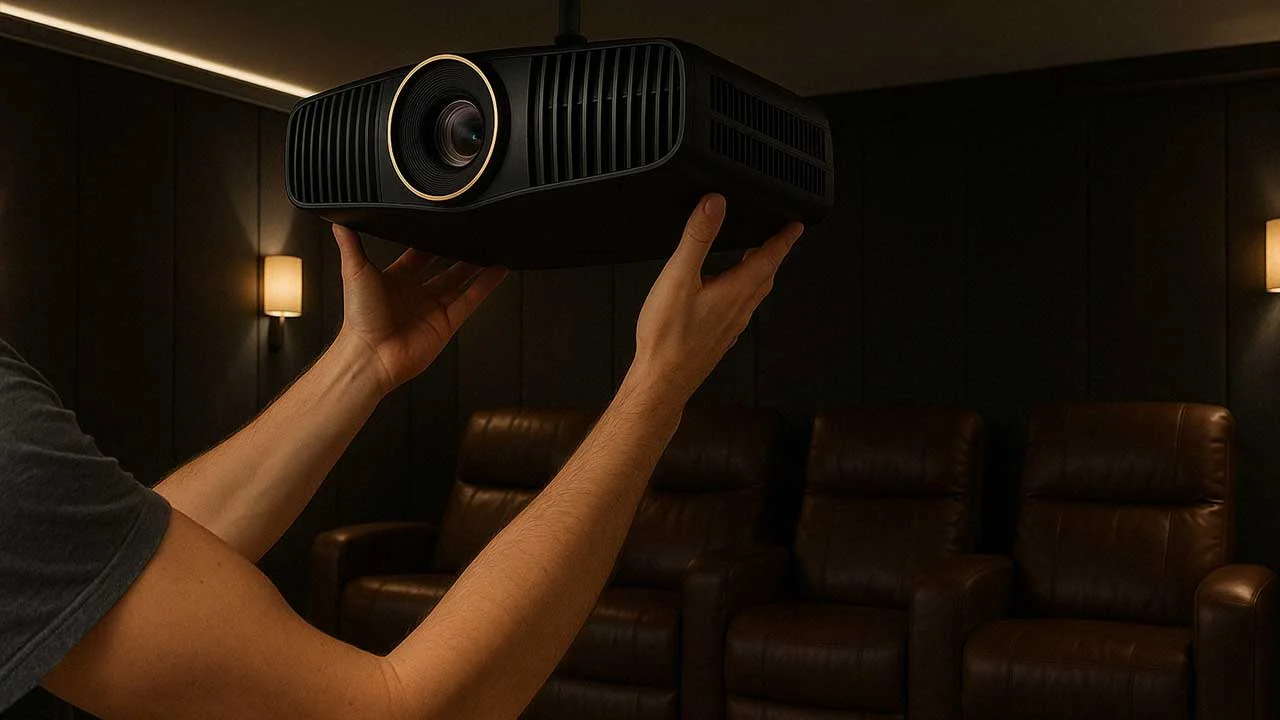
Since the W5800 is designed for custom integration, it includes an upgraded lens assembly with a 1.6X zoom range and a good amount of lens shift (vertical +/-50% and horizontal +/-21%). In my media room, the projector must be positioned on a shelf 14 feet away from my 123” screen and offset two feet left of the screen’s center. The W5800 is flexible enough for me to utilize it in my media room. Due to its image quality and installation flexibility, I utilized a long-term sample of the BenQ W5800 in my media room as one of my reference units for several months.
Since the W5800 was designed with custom installation in mind, it is equipped with all the tools needed to make integration smoother, such as IP control via LAN, RS-232 serial commands, and dual 12V triggers for synchronized automation with other equipment. Its motorized lens shift, zoom, and focus—along with lens memory—enable flexible placement and quick setup, even in complex rooms with architectural or functional limitations. Combined with a robust chassis design and intelligent thermal management, the W5800 is a projector that installers can recommend confidently, knowing it will hold up under real-world use.
Conclusion
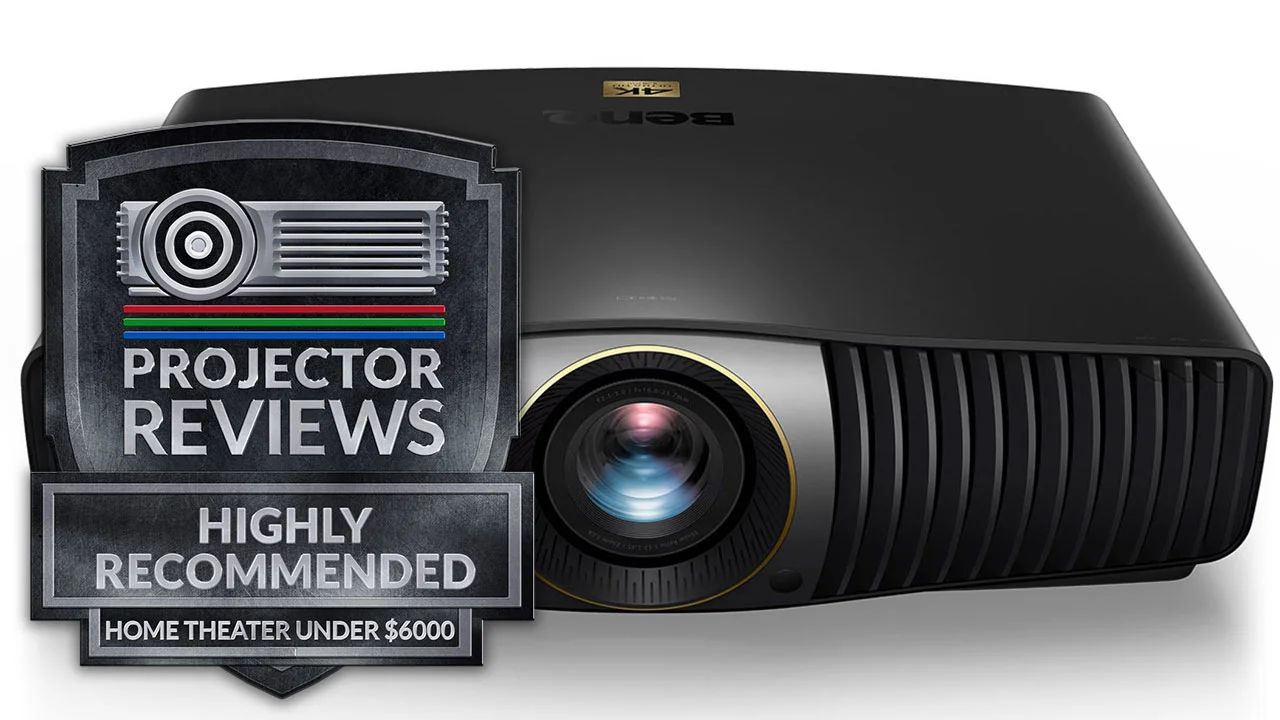
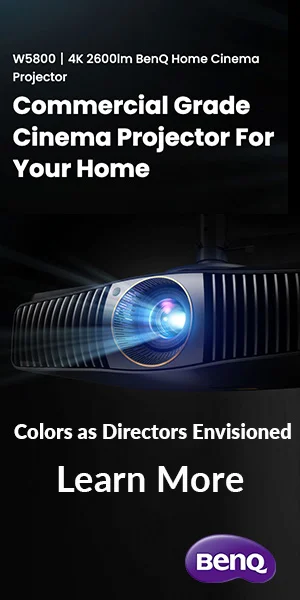
For AV integrators, choosing the right projector for a dedicated home theater or media room is about far more than image specs. It’s a strategic decision that must account for ease of integration, installation flexibility, and long-term reliability—all while delivering a picture that meets the expectations of clients investing in premium cinematic spaces. Each of these elements plays a crucial role in not just the theater's performance, but in the installer’s ability to deliver a seamless, future-proof solution.
When the success of a home theater installation depends on more than just image quality, AV professionals need a projector like the W5800 that performs just as well behind the scenes as it does on screen.
The BenQ W5800 is a compelling option for custom integration projects because it combines high-end imaging, seamless integration with popular control systems, and long-term reliability into a package purpose-built for the demands of dedicated entertainment spaces.
Its professional-grade image quality, robust installation features, integrator-friendly controls, and dependable LED light source make it a smart, capable choice for professionals who want to install once and install right. For projects where performance, practicality, and peace of mind matter, the W5800 deserves serious consideration.
To learn more about the W5800, visit the BenQ W5800 webpage or read our detailed product review. Interested in becoming a BenQ dealer, or you want to learn more about the benefits of installing the BenQ W5800 in your jobs? Check out BenQ's Dealer page.












